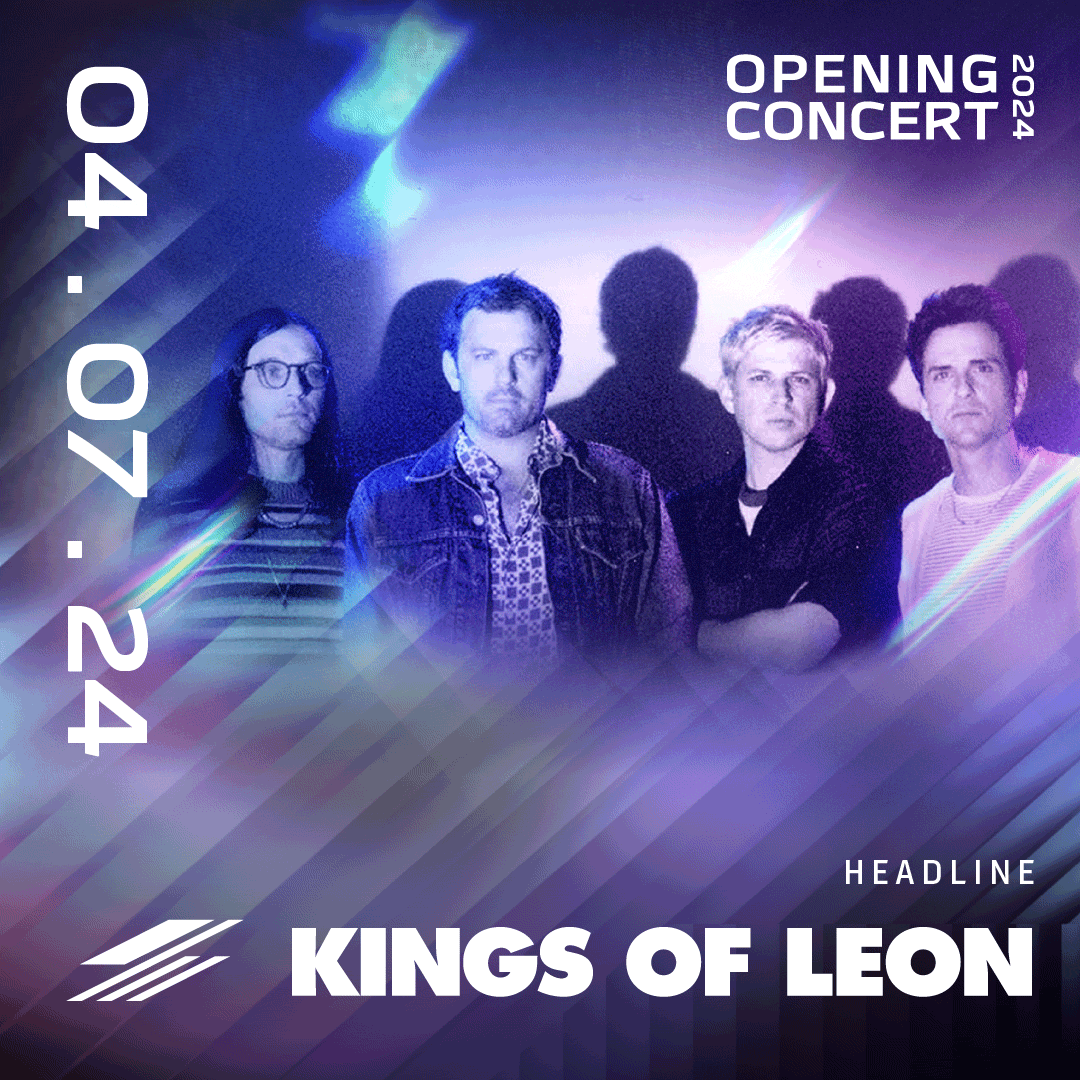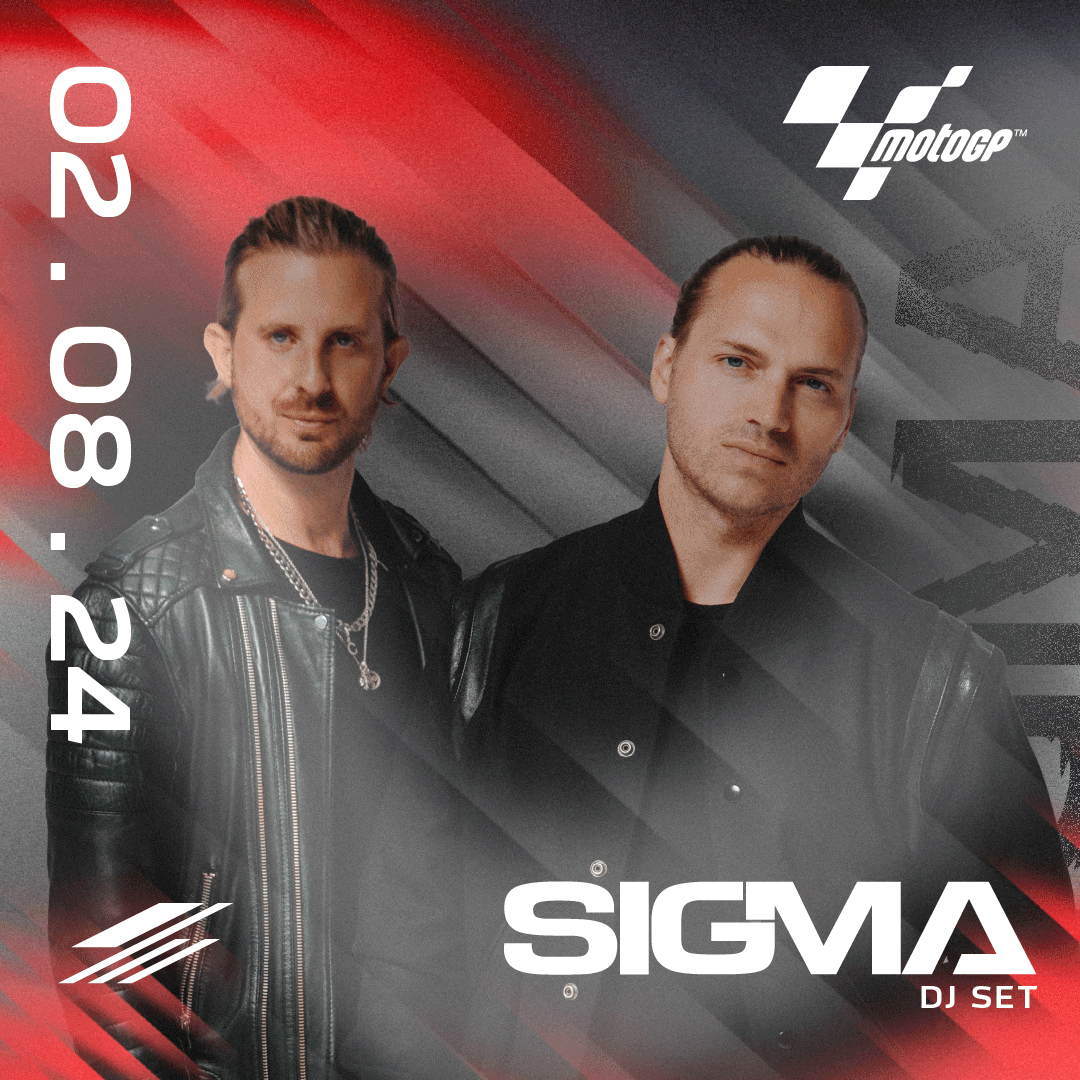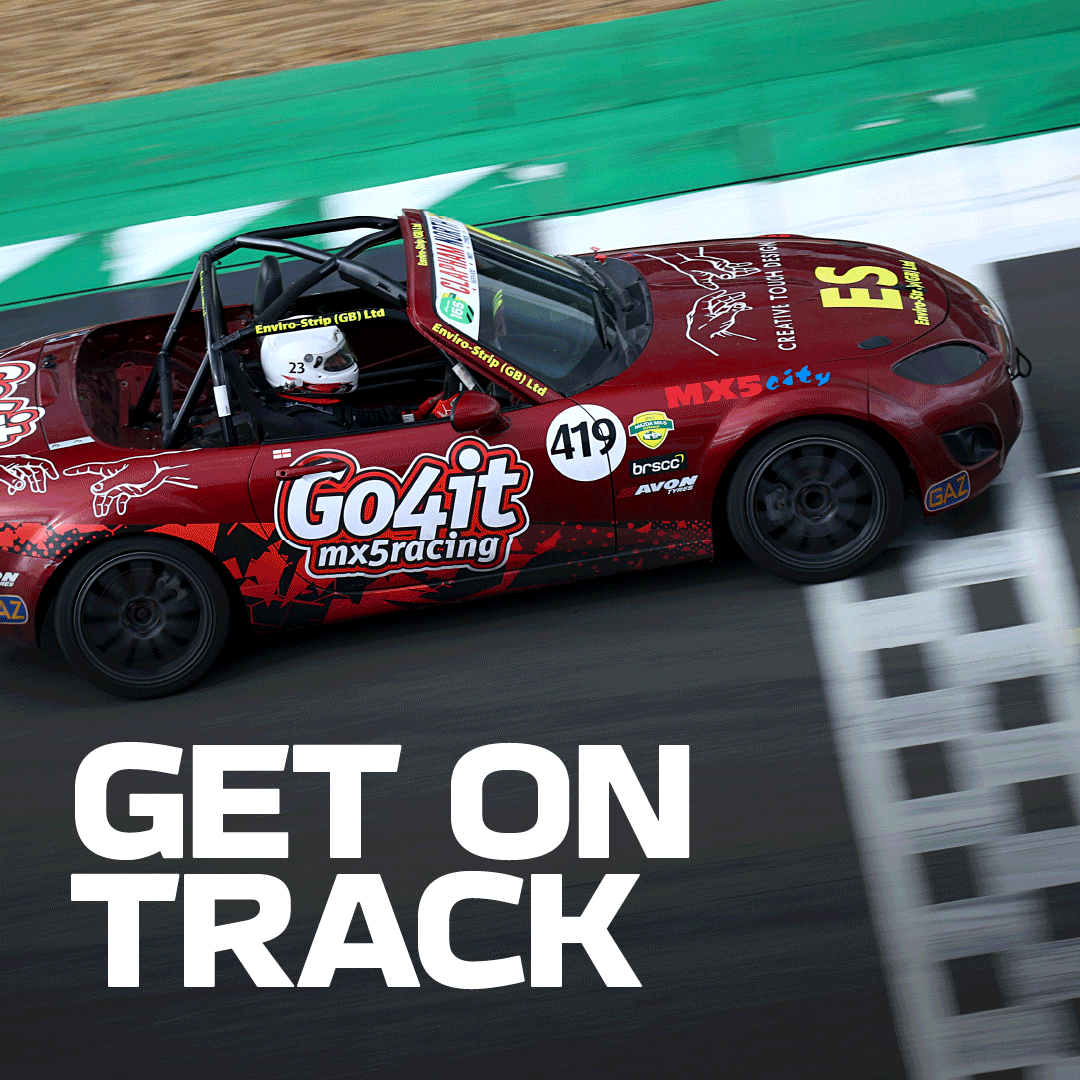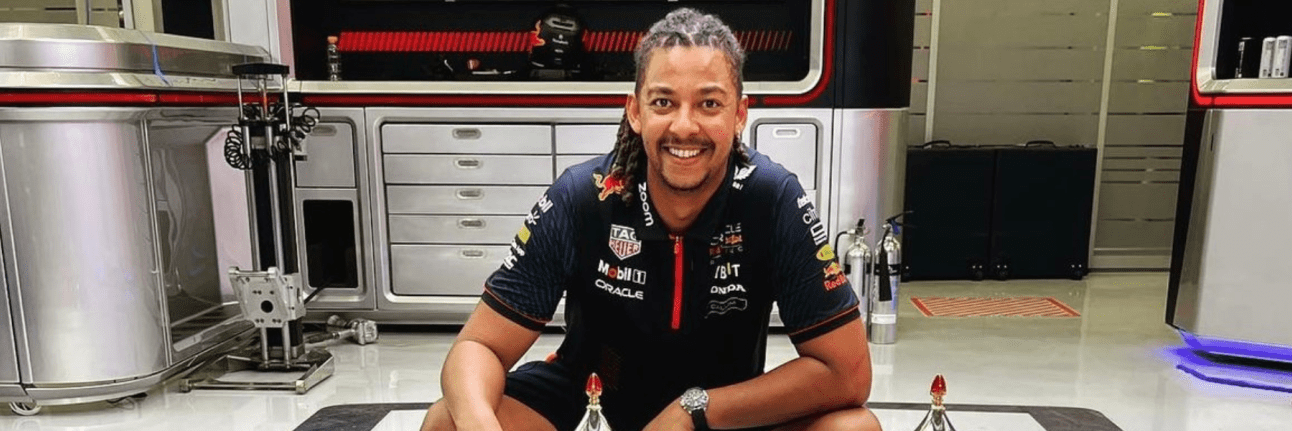
Red Bull Racing's Calum Nicholas on his journey to F1
29 June 2023Calum Nicholas, also known as @f1mech, is one of the F1 Paddock’s most recognisable faces. Having built a following on Instagram, where he boasts a huge 126,000 followers, Calum has quickly become one of the paddock’s most popular members, from sharing insights into his role online to being recognised by fans all over the world either on television or on the grid.
Silverstone caught up with Calum to learn more about his role, what the British Grand Prix race weekend looks like for him and how excited he is to return to the Home of British Motorsport, a place he holds close to his heart.
Humble beginnings for Calum Nicholas
Calum didn’t have an interest in motor racing at all until around 2008. Then, in 2009, he had the opportunity to attend his first ever race as a fan: the British Grand Prix at Silverstone. He did the Pit Lane walk on the Sunday morning, and it was at this moment, as team members worked in and around the garage, when things changed.
“The teams were prepping the cars and I saw them going out and doing pit stop practice,” Calum says. “It was a pivotal moment in that I saw people doing this job and I thought to myself that I could do it, too. It was the moment I took a first interest in a career in motorsport.”
Calum studied at the National College for Motorsport at Silverstone. Initially, he felt like he was back at college because he needed the certificates, but when he got there, he realised that he still had so much to learn.
Being located at Silverstone to study was also lucky for Calum because his college pass would allow him to walk into the circuit on his lunch break. Most days, there was some sort of test session or open session at the track and it was the perfect opportunity for Calum to meet different teams and get his name out there.
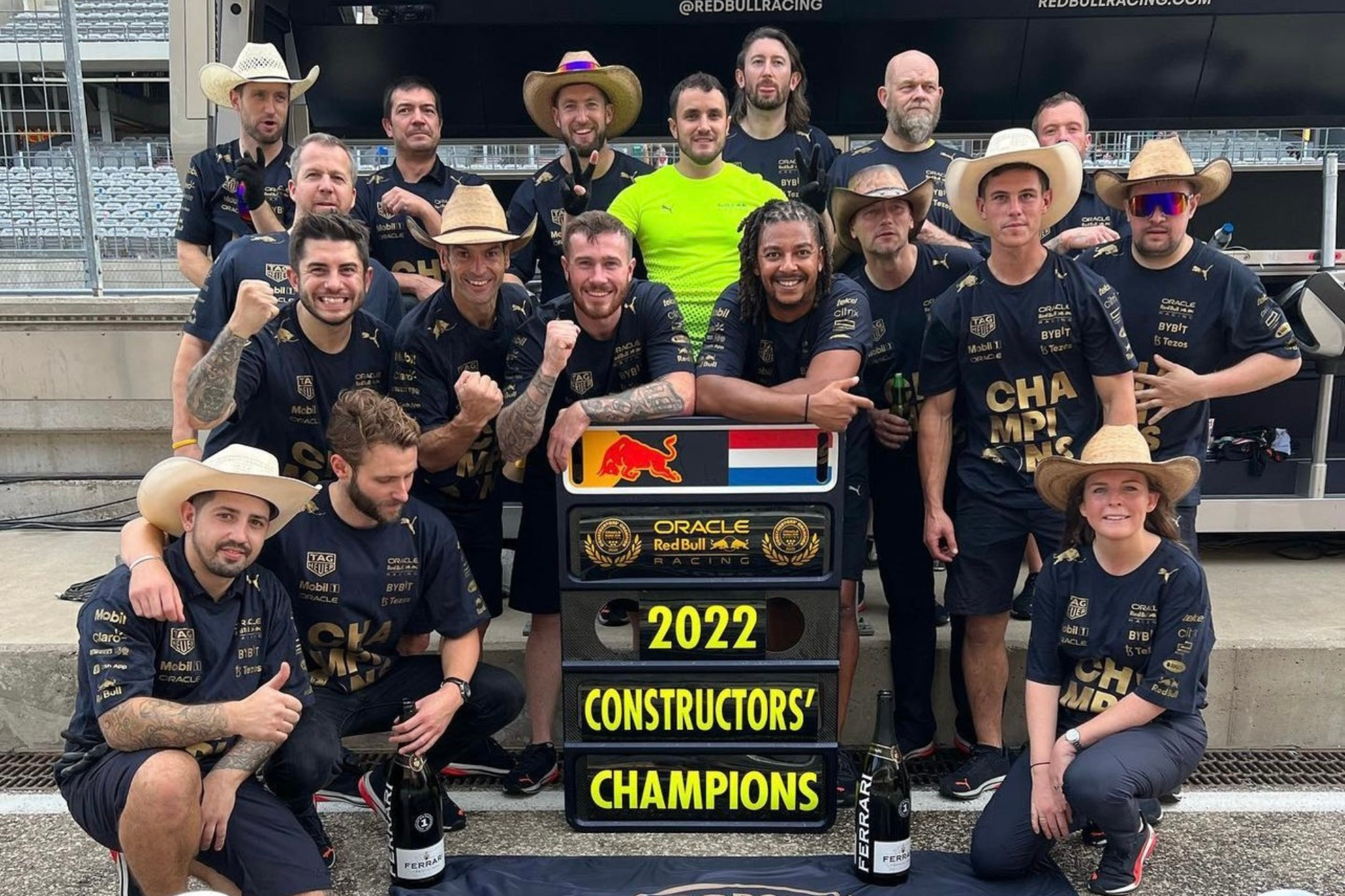
Climbing the ranks at Red Bull Racing
Calum is now the Senior Power Unit Assembly Technician at Red Bull Racing and has a list of responsibilities across a race weekend and throughout a race season.
He is responsible for the build and service of all race and test engines and at some point across the year, dyno engines. Calum ensures that all of those assemblies are made to the correct specification and are well within their race life, and manages any logistics like when the team might build power units, what needs stripping at what point in the weekend and preparation for future races.
The vast majority of Calum’s job focuses on the systems that integrate the power unit into the chassis including the cooling systems, pipe work for oil, water and ERS, exhaust systems and the coolers themselves, as well as any other pipe work or other things that integrate the power unit into the chassis.
Since joining Red Bull Racing in 2015, Calum has been part of the team who have brought the team back to their winning ways. Now, Red Bull have won two consecutive World Championships with Max Verstappen and in 2022, they won the Constructors’ Championship after a stellar effort on and off track.
A Grand Prix weekend at home
The race weekend at Silverstone is busy for every team, including Red Bull, who technically have a home race at the circuit since their HQ is located only a few miles away in Milton Keynes.
“Being at Silverstone means we can prep the car in our factory,” Calum says. “We will spend Monday and Tuesday preparing the car in the factory and that will go on a truck to the circuit on Wednesday afternoon.”
The first task on a Thursday is to consult the setup sheet from the engineers and get the car all set up for the weekend, starting with hydraulic checks, making sure the car is holding all of its fluids and there’s no leaks or nothing unexpected.
“On a Thursday, the FIA have a specified time of when you can first fire your car up,” Calum explains. “The FIA will have been round and unsealed the engine."
“In that fire-up, you’ll go through all the normal checks and the engineers will be looking at the data, making sure everything’s working as it should be.”
Then, it’s time for Calum and the team to finish building the car and getting the floor on before completing legality checks. F1’s new laser scanning system allows teams and the FIA to probe certain parts of the car to ensure the car is legal and in the parameters set by the FIA. The scanner also helps with performance changes, so if there’s something that’s not quite in the right place, those checks help Red Bull to make any modifications so that the car is exactly how they expect it to be built.
“It’s a time-consuming job so a lot of your day on a Thursday is spent doing that job,” Calum says. “You don’t want to move on and do other things because if you come back to it later and there’s an issue, your whole day is all over the place.”
Thursday’s final job is pit stop practice. It’s Red Bull’s longest pit stop practice session and they tend to go through every possible type of stop, to normal tyre changes to penalty stops. Red Bull also go through crew stops; although they are one pit crew on race day, if a situation arises in qualifying where both cars need to pit and quickly, there are two car crews to do any stops.
“It means there are less people doing it, so my role in a car crew stop would be not just to be on the wheel gun, but I’d also take the wheel off and have one person to put it on,” Calum says. “Then, we’re out by curfew on a Thursday.”
Friday mornings might see a few last-minute changes from the engineers at the factory ahead of FP1 before the car display period, where people have an hour to look at any new upgrades on the car.
“We’re not allowed to work on the car but we are allowed to practice pit stops,” Calum says. “We’re building up all through the weekend so we get to Sunday and we’re ready to go.”
There’s a small period between FP1 and FP2 to grab some lunch, providing that the car made it through the weekend’s first session without any issues. Friday afternoon sees FP2 before the cover system comes into play. Three hours after the end of FP2, the cars have to be in one piece and have a cover on them ahead of Qualifying day.
“The first really, really big day is Saturday,” Calum says. “We still have to do all the morning checks, the pit stop practice and then you run FP3.
“After that, it’s crunch time.”
Crunch time
Without a great deal of time between the end of FP3 and Qualifying, Calum has one last look around the car to make sure there’s no problems before proving to the FIA that the auxiliary tank is empty, as it shouldn’t be full for Qualifying.
After Quali, there’s a little bit of respite, when Calum tries to do some administrative work like planning for the next race or anything else that might need dealing with. The cars spend time being scrutineered by the FIA to check everything is legal and within particular parameters again, before preparing for race day.
“There’s nothing worse for me than having a hectic Sunday morning,” Calum says. “I’m a creature of habit and I think a lot of people are because routine is what makes us fast and get through the workload so quickly.”
There comes a point on Sunday for Calum where he’s fully in race mode, in his very fixed and rigid routine. After the final pit stop practice, Calum has a drink and puts his suit on and then, his ‘race face’ is on.
“People see me on Sunday and they’ve often asked me why I look like a bouncer on the grid,” he says. “I go to the grid and get everything set up, then the car comes down and from that point, I’m in my own headspace and my own routine on the grid.”
With audio cues from people on the radio telling Calum what’s next, from fire ups to when the tyres need to go on, Calum quickly becomes focused on the routine and getting back into the same rhythm as each race weekend.
“From the point that the car leaves the grid on the formation lap, we’ve done all we can in terms of the car,” he says. “Then, my only focus needs to be pit stops."
Each race is followed by the pack up of the garage, ready to head to the next race wherever in the world that may be.
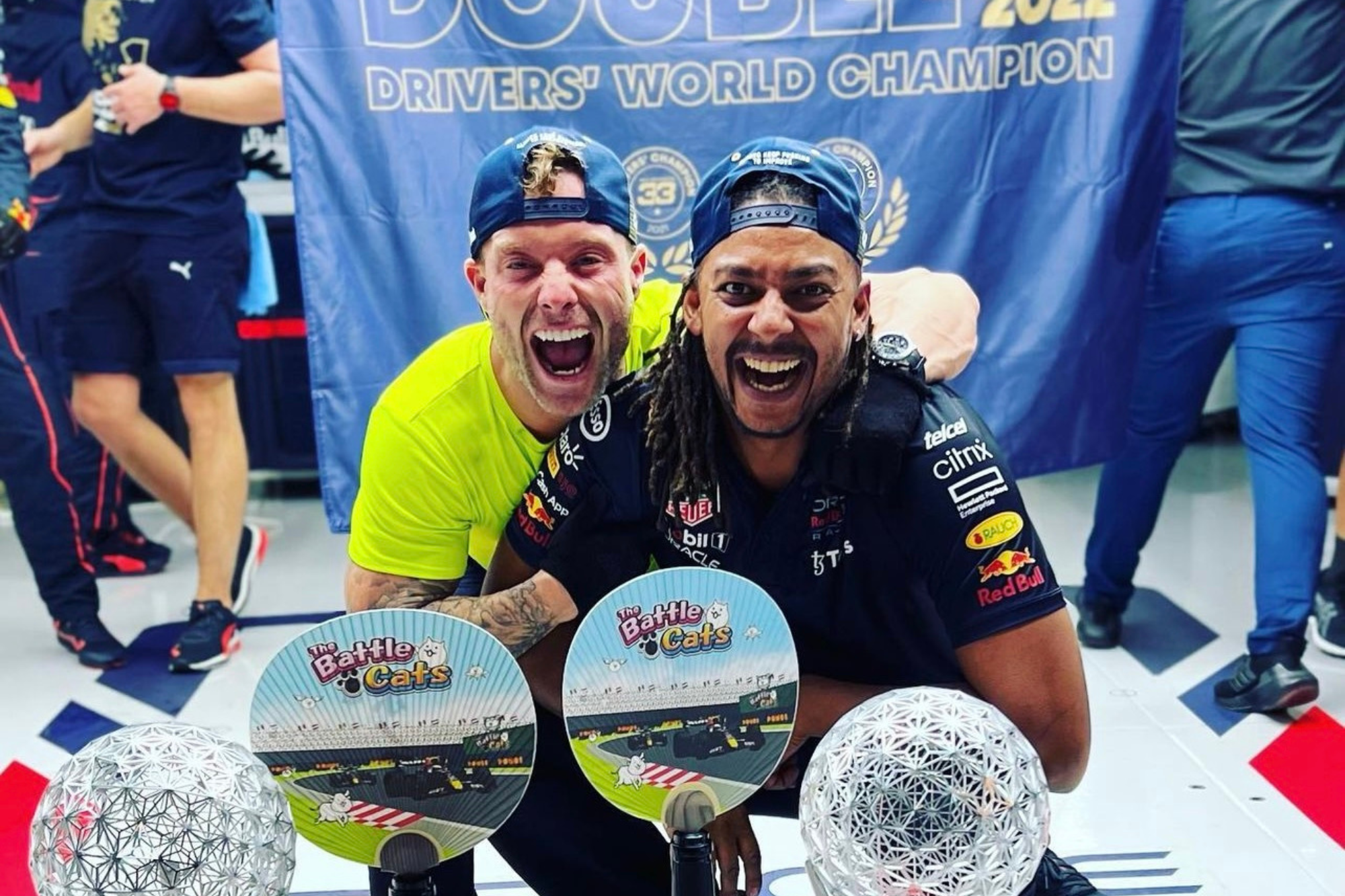
Stop and smell the roses
Silverstone is Calum’s home race and it’s also a circuit that he holds close to his heart because of the experiences he had at the track in his earlier career.
Calum highlights that there’s a few races on the calendar where, when he’s on the grid, he really begins to notice the atmosphere and soak it all in.
“You have this little moment with yourself and you can really feel the passion and Silverstone is one of those races,” he says. “Silverstone is one of those races where you certainly get the feeling off of the crowd and it definitely motivates you more.”
One piece of advice from Calum Nicholas
One of the first pieces of advice Calum offers when people ask him how to embark on a career in motorsport is the first advice he was given at college.
“One of the most important things you can do is go out and try and participate in motorsport in some way,” he says. “Motorsport is still very much an industry where your network can be important, so you need to talk to the people in these paddocks and get to know them.
“Any one of these people who are working for a team or running a car at an event could be your next career opportunity.”
There are so many avenues in motorsport to work in. For Calum, it was about finding that something he would get up early and stay up late for, but also something that he would miss his family and his children for. Having a love and a passion for your job is vital in motorsport.
